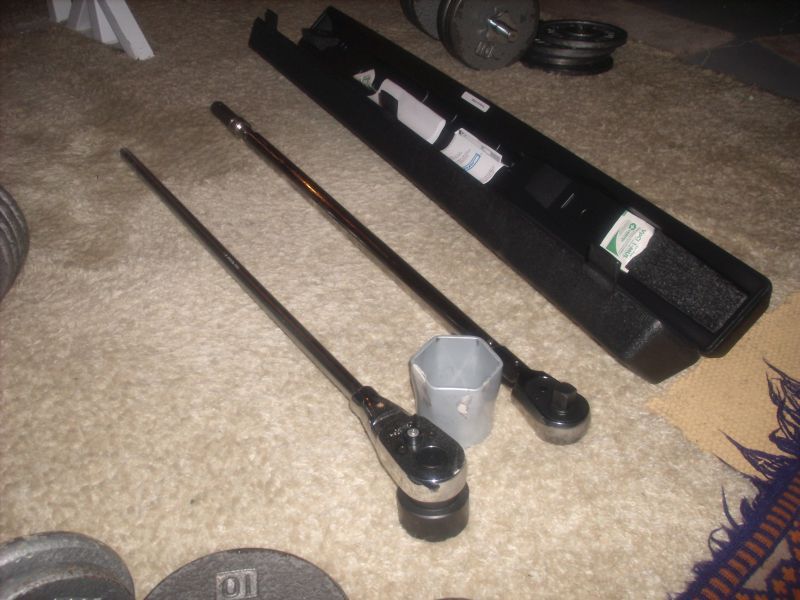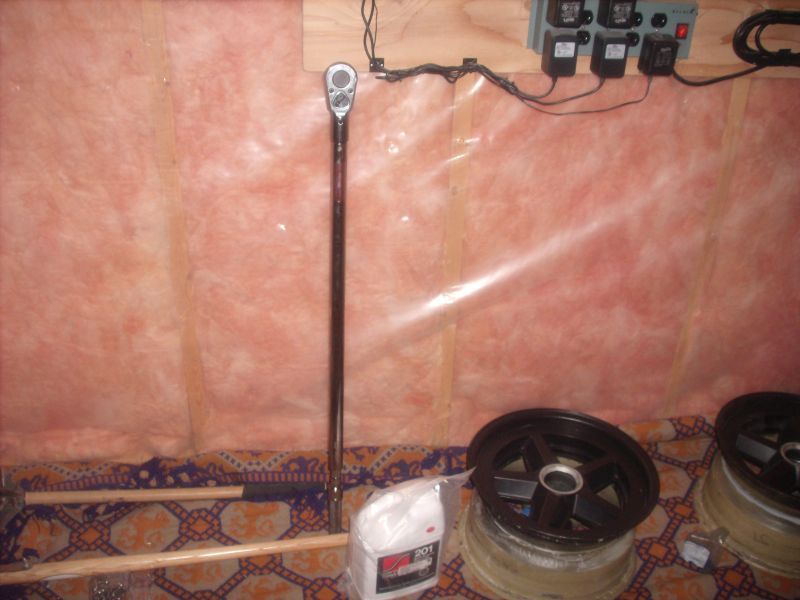I recently installed a set of centerlocks on my SLC, and thought I'd share the details, as it a relatively rare option, and most SLC builders have probably never seen them in the wild.
As most people know, centerlocks are the choice in motorsport where they are allowed, and where pitstops are required. That's largely because it's so much faster to change wheels that have just one large nut, instead of 4 or 5 small ones. Most all of the IMSA GT and prototype class cars have them. The Le Mans P1 cars all have them, as on the current Audi, Porsche and Toyota prototypes, as do all Formula 1 cars, and most all other formula cars, for that matter. Of course, the Porsche 911 Cup cars have them, and they are an option for some of their other cars as well.
So there's a motorsports theme to them that is consistent with the Group C look that our cars have.
The setup from Superlite is, as you'd expect from them, lightweight, strong and well-engineered. The main adapter and nut are actually machined in house, from steel and aluminum billet, in order to meet quality and delivery requirements.
Even the wheels are machined in house. In fact, though the Superlite centerlock kit uses Forgestar wheels, Forgestar doesn't have or sell a centerlock wheel. Superlite gets un-machined wheel blanks from Forgestar, and does final machining on their Haas CNC machining centers (each of which is about the size of a minivan, for those who haven't been to the factory). Each wheel is bored to have the correct center hole, machined for the correct backspacing, and carefully machined for the pins in the adapter that actually transmit the torque. Any of the standard Forgestar wheels Superlite supplies can have this treatment- mine are the CF5s.
Here's a pic of the steel hub adapter, and the large aluminum nut:

The wheels, adapter and nut are surprisingly light. Detailing, including the threads, is typical superb Superlite quality, with the nuts in particular a thing of beauty.
Here's a picture of the adapter bolted to a hub:

The stainless steel pins are actually a kind of lug nut, serving to locate and lock the adapter to the hub, as well as fit precisely into the corresponding holes in the rear of the wheel. They are beveled on the adapter side, to fit matching bevels on the adapter. This serves to precisely locate the adapter on the hub to maintain concentricity.
Once mounted to the car, the adapter looks pretty motorsporty:

Once the adapter is mounted on the car, the wheel is easy to slip on the adapter. Aligning the wheel on the pins is easier than I thought it would be, and once aligned, the wheel just pushes on the adapter and allows the large aluminum nut to be installed and tightened.

The pins are tightened just like a regular wheel nut (the pins use a 5/8" socket), but the actual centerlock requires a 3" socket- and no, that isn't a misprint. The socket is massive, and so is the torque wrench required to tighten it to the 330 ft lbs it needs.
Once installed, the wheels are like any other wheel on the SLC- except faster to change (assuming you have the John Bunyan-size torque wrench and socket). And cooler.
Here are a couple of pictures of my car at the recent Carlisle Import and Performance Nationals last weekend, showing how the centerlock wheels look on a car:



I'm really happy with the look, and the quality of the individual pieces. The setup isn't inexpensive, but these are special cars.
As most people know, centerlocks are the choice in motorsport where they are allowed, and where pitstops are required. That's largely because it's so much faster to change wheels that have just one large nut, instead of 4 or 5 small ones. Most all of the IMSA GT and prototype class cars have them. The Le Mans P1 cars all have them, as on the current Audi, Porsche and Toyota prototypes, as do all Formula 1 cars, and most all other formula cars, for that matter. Of course, the Porsche 911 Cup cars have them, and they are an option for some of their other cars as well.
So there's a motorsports theme to them that is consistent with the Group C look that our cars have.
The setup from Superlite is, as you'd expect from them, lightweight, strong and well-engineered. The main adapter and nut are actually machined in house, from steel and aluminum billet, in order to meet quality and delivery requirements.
Even the wheels are machined in house. In fact, though the Superlite centerlock kit uses Forgestar wheels, Forgestar doesn't have or sell a centerlock wheel. Superlite gets un-machined wheel blanks from Forgestar, and does final machining on their Haas CNC machining centers (each of which is about the size of a minivan, for those who haven't been to the factory). Each wheel is bored to have the correct center hole, machined for the correct backspacing, and carefully machined for the pins in the adapter that actually transmit the torque. Any of the standard Forgestar wheels Superlite supplies can have this treatment- mine are the CF5s.
Here's a pic of the steel hub adapter, and the large aluminum nut:

The wheels, adapter and nut are surprisingly light. Detailing, including the threads, is typical superb Superlite quality, with the nuts in particular a thing of beauty.
Here's a picture of the adapter bolted to a hub:

The stainless steel pins are actually a kind of lug nut, serving to locate and lock the adapter to the hub, as well as fit precisely into the corresponding holes in the rear of the wheel. They are beveled on the adapter side, to fit matching bevels on the adapter. This serves to precisely locate the adapter on the hub to maintain concentricity.
Once mounted to the car, the adapter looks pretty motorsporty:

Once the adapter is mounted on the car, the wheel is easy to slip on the adapter. Aligning the wheel on the pins is easier than I thought it would be, and once aligned, the wheel just pushes on the adapter and allows the large aluminum nut to be installed and tightened.

The pins are tightened just like a regular wheel nut (the pins use a 5/8" socket), but the actual centerlock requires a 3" socket- and no, that isn't a misprint. The socket is massive, and so is the torque wrench required to tighten it to the 330 ft lbs it needs.
Once installed, the wheels are like any other wheel on the SLC- except faster to change (assuming you have the John Bunyan-size torque wrench and socket). And cooler.
Here are a couple of pictures of my car at the recent Carlisle Import and Performance Nationals last weekend, showing how the centerlock wheels look on a car:



I'm really happy with the look, and the quality of the individual pieces. The setup isn't inexpensive, but these are special cars.
Last edited:


